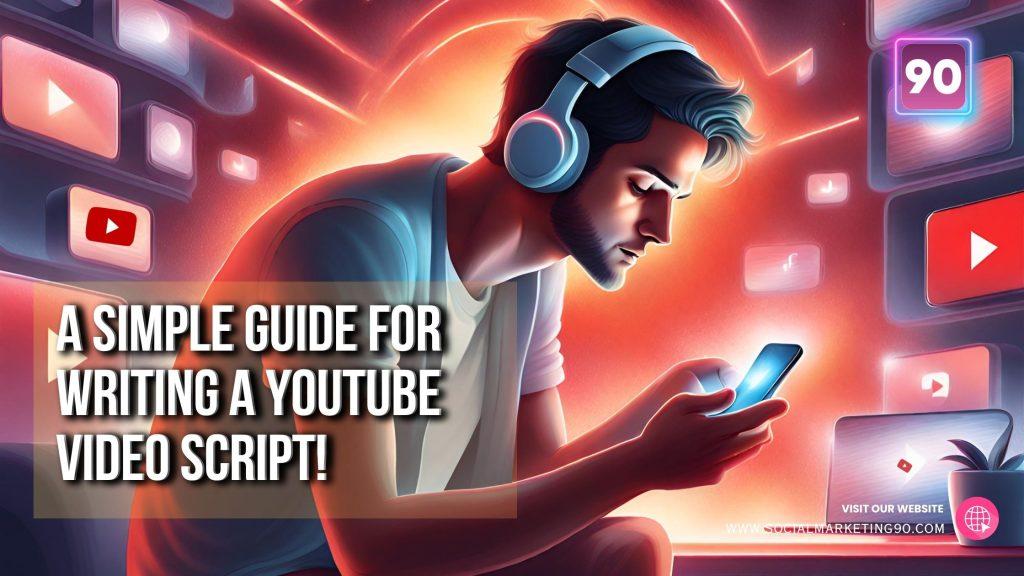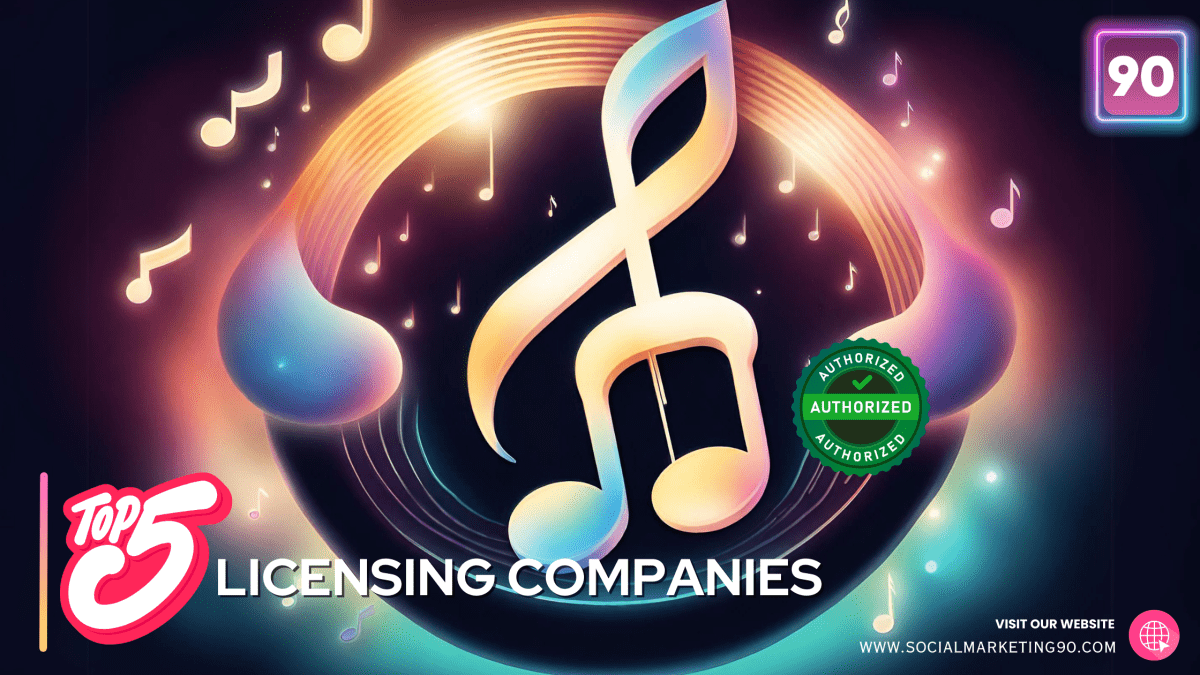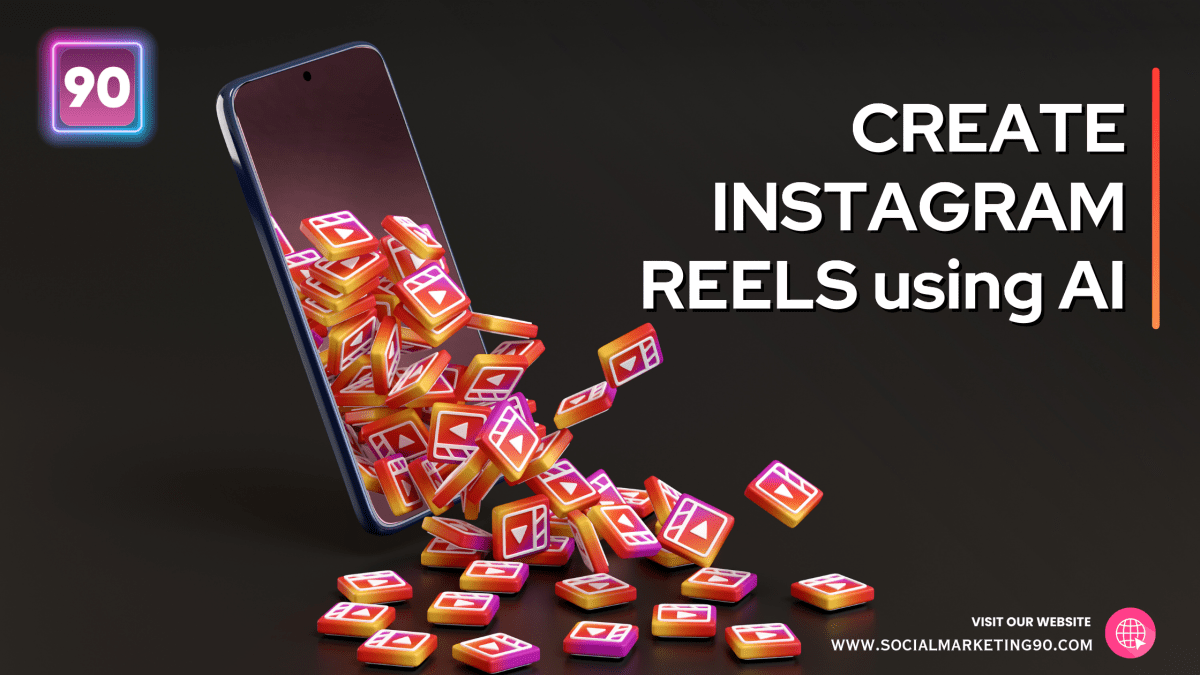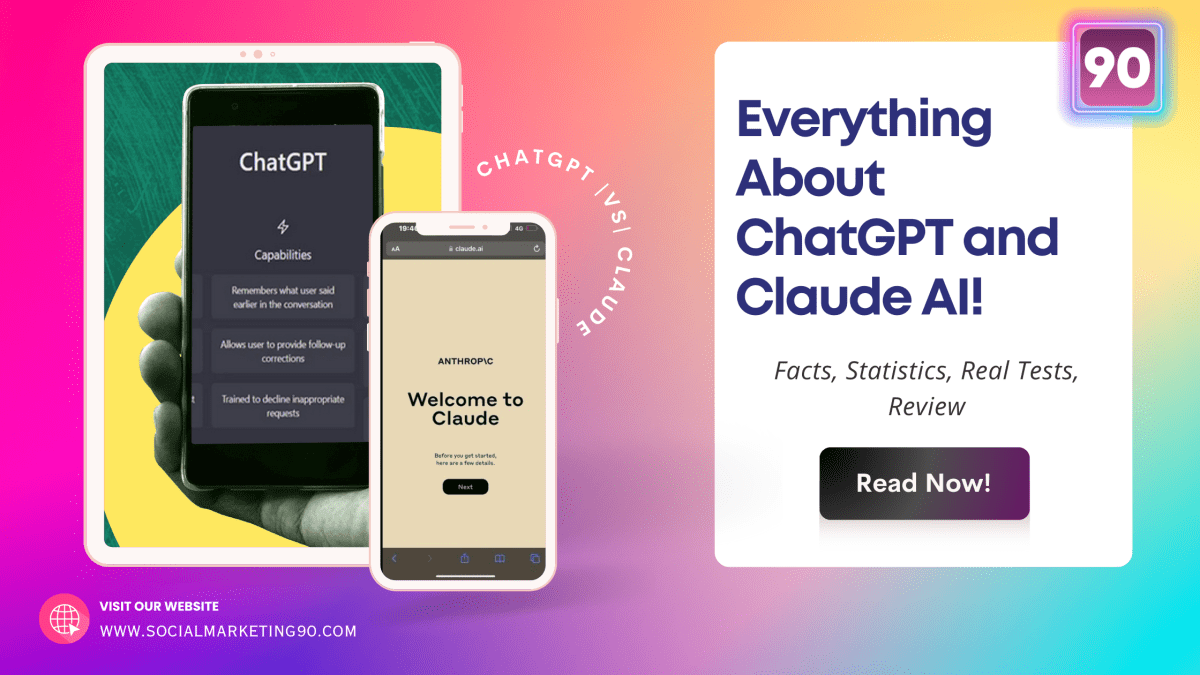How do you compose a YouTube video script that hooks your viewers in just eight seconds?
Before you throw up your hands in the air and scream “IMPOSSIBLE,” let me remind you that your favorite YouTuber(s) may have succeeded in achieving that same feat—with you.
They followed the exact tips that I’m going to discuss in this article to create a script with a narrative that came well-armed with a hook you couldn’t resist and a body of content that you couldn’t get enough of.
Now, it’s time for you to get that same power in your hands by applying the 10+ steps contained in this article to craft a script so good, your viewers won’t want to miss out on the action.
In this article, you will learn
- The questions you need to ask yourself and answer before setting out to create your script
- The YouTube script essentials no script dares miss
- How to know your audience
- How to choose your topic
- How to pick your style of delivery
- How to create your outline
- The hook
- The introduction
- The content
- The CTA
- Pattern Interrupts, and much more
There’s so much to unpack here. This is not just a mere list of ideas, tips, and strategies. It’s an in-depth guide that packs everything you need to know about infusing life into your YouTube video script.
So, let’s start, shall we?
Preliminary Questions to Ask Yourself

Before you settle down to draft the first lines of your YouTube script, asking yourself certain questions will nudge you in the right direction to tailor the contents of your script to the needs of your audience.
So, what questions should every scriptwriter answer if they want to put themselves in the shoes of their viewers and followers?
- Who is my target audience?
- What benefits do they expect to derive from whatever I’m sending their way?
- In a nutshell, what’s the key takeaway of my presentation?
- What emotions do I want/or need my audience to feel?
- What action do I want my audience to take after watching this video?
Taking the time to meditate on the answers to those questions delivers a double-edged benefit—you will approach the subject from your audience’s perspectives which in turn might just clear the way for them to consider your offer since you are not appearing salesy or pushy.
YouTube Script Essentials Part A: Script Elements
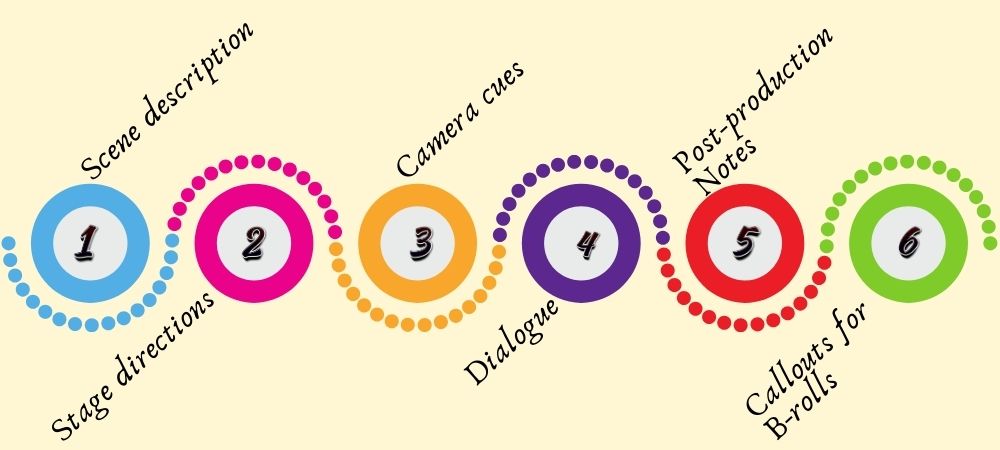
While quizzing yourself (try getting an A on that) on the right psychological buttons to push is non-negotiable, it is only the beginning of the process of writing a great YouTube script.
You see, there are elements of a YouTube script that shouldn’t be missing from your own. They are what form the right framework for your script-writing efforts.
Call them ingredients or whatever else, but here they are:
Scene description
The scene description of your script provides the details of your video’s scene. For instance, it elaborates on the kind of conditions that are simulated in the video like “cozy coffee shop, rainy morning, et cetera.”
The scene description also details the actions you or the other characters in the video will take such as “Next, I take the product outside.”
In short, your scene description helps you to set the scene, plan your shots, follow a logical flow of action, and guide viewers to correctly match your actions and emotions with the spoken message.
When putting your scene description together, remember that its level of detail depends on the kind of video you are filming. A product review’s scene description, for example, won’t be nearly as detailed as that of a music video or a travel vlog.
Generally, scene descriptions are more in-depth for videos that
- Are complex narratives e.g. storytelling videos
- Are highly visual, but context-heavy e.g. travel vlogs
- Require precise timing or coordination e.g. dance or fitness routines, DIY or craft tutorials with many steps
Stage directions
The stage directions contain the instructions for all the actions you, the speaker, or someone else will be doing in the video.
The stage directions enable you to act the right thing at the right time and avoid movements and gestures that seem disconnected, exaggerated, or altogether unnecessary.
Camera cues
The camera cues refer to the instructions for your camera crew to guide their movements and shot selections.
The purpose of camera cues is to ensure smooth transitions between shots, capture important moments, and maintain visual coherence with the overall production
Dialogue
The dialogue is the spoken message or content you as the speaker will be delivering in the video.
Now, there’s a reason why it’s called a dialogue instead of a monologue even though your viewers most likely won’t be replying to you.
Since everything you will be saying or expressing in the video is all about your audience, you should be able to mentally interact with them by anticipating your user’s queries and addressing them in your presentation.
More than that, you should factor in how your audience might react to your points and questions and thus, make your dialogue more relatable.
In your dialogue, tailor your language, tone, and humor to your audience’s interests and age group. Substitute “we” or “they” with “you” to make the dialogue feel more personal. Avoid jargon or technical terms your audience might not understand.
PRO TIP: Write your dialogue the way you talk. Avoid sounding robotic or overly formal.
Post-production Notes
In a YouTube video script, the post-production notes are the written suggestions or instructions that guide the editor or post-production team members after filming is complete.
Post-production notes serve a variety of purposes. They allow you to, for instance, flag specific shots or dialogue snippets that help the video gain its desired impact.
Another function of post-production notes is to guide the editing team to maximize the smooth flow of the video. You get to instruct your editors to implement certain styles and special effects that give the video a smooth and cohesive flow.
Finally, the suggestions in your post-production notes can help the editing team identify and correct any discrepancies or mistakes that detract from the video’s overall narrative.
Callouts for B-rolls
As a refresher, B-rolls refer to the supplemental visual footage of a demonstration or a closeup of a product as a transition from an explanatory narrative.
When you include in your script specific instructions on where and how your editors should integrate B-rolls in your videos, it is termed a call-out for B-rolls.
When integrated properly, callouts can enhance the storytelling effect through appropriate visuals. They can also create emotional impact and prevent your video from being a monotone land of dialogue without any captivating visual element.
YouTube Script Essentials Part B: The Appropriate Format
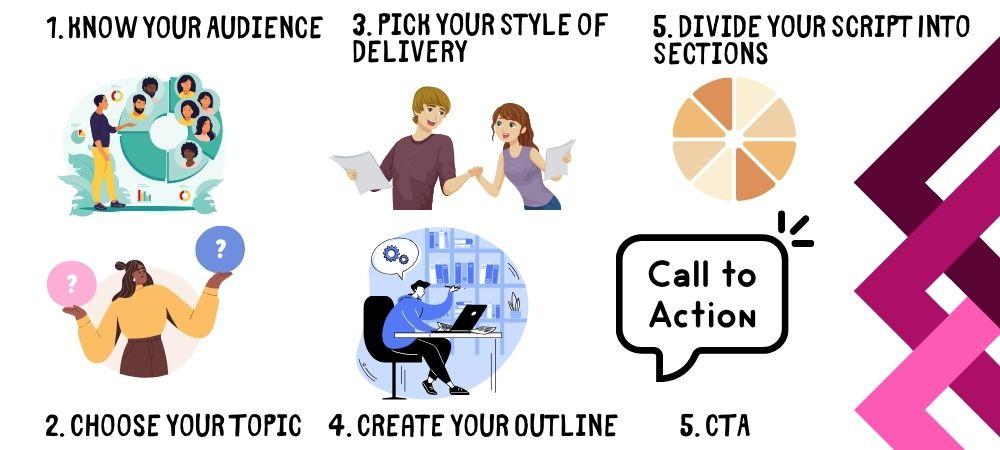
Generally, YouTube video scripts follow one of three formats: Audio/Visual (AV) format, Audio/Visual/Graphics (AVG) format, and the Sequential Flow format.
The AV and AVG script-writing formats divide the script into different columns containing the instructions for each of the major elements of the video that they work for.
For example, a video that utilizes only audio content and video footage has an AV script behind it. This script format has only two columns—one for the visual instructions and the other for the audio elements. Educational videos, product tutorials, and reviews, et cetera, are examples of videos with the AV script format.
In line with that, the VAG format simply adds a third column for the graphics (e.g. animations, text overlays, captions) instruction. Examples of VAG-appropriate content include explainer videos with heavy animation and graphics, interactive videos with clickable elements and dynamic overlays, and so on.
The sequential flow format, however, deviates from the columnar allocations and spells out everything from the top of the page to the bottom in a chronological manner. This is the script format commonly employed in film scripts and podcast scripts.
All these formats act as blueprints for your YouTube video. They strive to, in their own way, provide a clear roadmap for the narrative flow, scene transitions, and key elements.
Let’s finally get into the actual scriptwriting process.
Know Your Audience
Yes. Please do. As with any other type of content that you publish online, your audience must find your video content relatable and helpful.
Remember, you don’t just want to pass information, you want to show that you are intimately aware of the needs of your audience and are motivated by a desire to make their lives easier.
When you are just starting out with your business or before you select your niche, it’s a good idea to choose a niche that you are already a target audience for. That way, you can truly put yourself in your reader’s shoes as you compose your script.
It also helps to visit online forums with dedicated chat rooms filled with the kind of people you write content for. From their conversations, you can tell what’s trending in the minds of your target audience.
Also, why not take the knowing-your-audience process to your real-life interactions? Converse with others on topics relevant to your specialty and find out what to include in your script.
Choose Your Topic
Your topic heading can make a huge difference in how YouTube’s search engine algorithm ranks your video.
Just like in SEO for Google’s search engines, a broad topic like “best face creams” can easily get lost in the sea of competitors.
It’s better to refine your topic heading (s) by being more specific and sprinkling in high-ranking keywords. For instance, “best face creams” could be rewritten as “best face creams for dryness in 2024.”
Another long-tail keyword could be “natural face cream for sensitive skin” or something like that. You get the point.
If you are going to target people in your region or from another location, you could optimize your topic for local searches. So, using the example above, you could have something like “best Korean face creams in Los Angeles.”
This topic targets two sets of people at once. Those who want Korean face creams and those who live in Los Angeles.
Using action verbs is another proven way to attract more clicks and shares. Verbs like “discover” or “shop” are actionable and impel people to actually take the action described.
PRO TIP: To get high-ranking keywords to add to your script topics (and content too), follow this three-step formula: use Google Trends to identify topics of interest, fish out potential keywords with YouTube suggestions, and find out keyword volume with Ahrefs.
However, SEO is only one half of the equation when it comes to choosing the topic of your video. There is another metric that even the most advanced algorithm won’t help you with since they are not human. Here’s what I mean:
Fine, properly executed SEO strategies will convince YouTube to push your video to the top for people to see. But what will break the ice and motivate people to click your video?
It is the emotions you tap into. The psychological strings you are able to tug at.
According to Jake Thomas, founder of Creator Hook, the three elements you need for your video titles to hit hard are curiosity, fear, and desire.
Let your video titles create a subtle kind of suspense that leaves your potential viewer wanting to know more.
How can you harness the curiosity element? Use a power phrase and combine it with a time frame. Using our face cream example, you could try something like “I regret not using this anti-acne face cream earlier.” The power phrase is “I regret” and the regretted missed opportunity is “earlier.”
For the fear aspect, a video on facial skin care could lead with this title: “You are at risk of developing (so-and-so skin condition) until you stop these 5 (habits or something like that).”
Now, who wants to lose their attractiveness due to one skin blemish or the other?
And then for the desire part. If your titles capture a basic human desire, you are on the winning path. Like this one, “Glow Up on a Budget: Affordable Body Creams for Radiant Skin.”
In other words, you don’t need to spend much to have smooth skin.
Pick Your Style of Delivery
This stage of your preparation is all about your narrative (what you will be saying) and it will trigger your audience’s emotions.
This is where you turn to some of the best marketing formulas that big brands have used over the years to consistently win loyal hearts to their side.
I’m talking about marketing tactics like PAS (problem, agitate, solution), and AIDA (Attention, Interest, Desire, Action).
Your preferred style of delivery is ultimately up to the intent of your videos. If your focus is on immediate problem-solving and emotional impact, particularly for quick ads or product demos, use the PAS method.
For a more nuanced story for building brand awareness, or for guiding viewers through a structured decision-making process, the AIDA format might make more sense.
Create Your Outline
You are now about to create your script proper. The outline part involves breaking your topic down into subtopics, adding intriguing questions and hard-hitting facts that you don’t want to miss when you present on the screen.
Divide Your Script Into Sections
This is where you begin to flesh out the outline you have created. Ideally, the sections of your script should be condensed into the hook, the introduction, the main content, and the call to action.
Let’s explore them in more detail:
The Hook
Hey, did you know that humans nowadays have an average attention span of less than nine seconds—if that brought a goldfish to your mind, it’s because it’s true!
Yeah, Microsoft Corp actually brought out that statistic after conducting numerous studies that factored in the vast array of internet distractions that are thrown at us daily, and guess what?
Looks like YouTube agrees. According to the second biggest search giant on the planet, you have only 15 seconds to hook your viewer. And, thank stats once again, when YouTube grades your audience retention, it only uses the first 30 seconds—the average amount of time it takes most viewers to click away.
Okay, enough stats. How do you begin to make your viewers so busy watching your video that they can’t think of leaving?
It’s not hard. With the tips given below, you can boost your audience retention score dramatically over time, but it all boils down to infecting your audience with your passion and getting them to feel something.
And that means knowing your audience right? Exactly. Get familiar with what gets into them. Let’s unwrap the hooks now.
For starters, you could tell a joke or act it out instead. Who doesn’t like a good laugh? If a good sense of humor often makes us like people more, why not give it a shot? Just make sure it doesn’t rub the wrong way.
A motivational quote will most likely stir the hearts and minds of the deep thinkers in your audience, so before narrating the main story of your video, try dropping an inspiring proverb, quote, or saying that can send your viewers into thinking mode.
Repurposing something that’s in vogue right now by adding your own spin on it is another great way to keep your audience hooked on their screens. An excerpt from a popular movie, a catchy slogan, the latest dance craze, a viral meme, et cetera, are good sources of inspiration for planning your next hook.
One super-duper trick to stealing your audience’s wholehearted attention is to share an interesting fact. If you think of your main content as the story, then think of your hook as the mystery you use to introduce that story. Humans, by nature, love a shocking mystery as much as a good story, so consider using unfamiliar but headline-worthy facts, and ideas to open the floor.
Your entire video is dedicated to providing answers or explanations right? Why not use questions as your intro? If they are relevant to your viewers’ lives, introduce interesting perspectives, and are easy to understand, you will have succeeded in giving your viewers something to think about, thus crowding out any thoughts about dismissing your video.
You know that feeling when someone finally understands your pain and then offers the solution? Replicate it in your intro and in your audience by offering to solve a problem. Again, this requires an in-depth understanding of the needs and challenges of your audience. To make your viewers feel seen and understood, get to know what’s bothering them, address it in your intro, and promise a real solution.
Lastly, but don’t overlook this! Use a teaser as your intro. That’s right, isolate the highlights of your video and spin an entrance around them for your intro. It could be the most funny part of your video (or a close second) or the most intriguing part of your story. Anyways, the aim is to evoke an emotion in your audience that they can’t get enough of. You also want to give your viewers a hint of what to expect. That way, they won’t want to miss seeing how it unfolds.
The Introduction
Your hook serves as the appetizer and then your intro gives the menu list of all the juicy stuff your audience will relish as they stay with your video.
It’s important to give special attention to the introduction as it is the part of your story that identifies the subject and shows why your listeners should be interested it it.
The intro should familiarize your audience with you and your channel. The intro should also tell your audience what main points to expect and in what order the points will come.
For the latter point, make sure that your intro’s outline arranges the main points in a logical order. Also, ensure that there is a smooth transition between the main headings or main ideas of your script.
The Content
Yeah, let’s get to the real work here. The content is the main body of the script and how you approach it can make or break your audience engagement. For instance, your viewers will most likely be very furious with you if the main narrative doesn’t turn out to be as interesting as your hook and intro were depicting it.
Building the body of your script involves fleshing out the outline you’ve created earlier. It’s now time to start expanding on those sub-topics, and ideas you penned down in your script outline.
An important rule of thumb is to deliver at most five main points in your narrative. This will enable you to keep your delivery within the optimum length of time for audience engagement before it experiences a downward spike.
As you expand on your main points, make sure to add examples, experiences, and other credible data points to validate your story. Also, avoid doing a long unbroken dialogue as it can quickly bore your audience and make them tune out.
Instead, introduce midpoint engagements like rhetorical questions or drop-your-comments requests at random intervals throughout your delivery.
Midpoint engagements work because they force a switch from passive viewing—which can quickly lose flavor—to active thinking. When you let your audience pause to flex their mental muscles, your overall delivery can be very lively
Nearly every bit of your script’s main content can be optimized to inject more character into your scripts and make them more engaging and concise. Your tone of delivery is one such crucial bit.
Keep your delivery conversational in tone. Write as if you are talking to your friend. If this feels hard to implement at first, try rehearsing your delivery with one person on a one-on-one basis. This will allow you to gradually refine your tone to the more intimate level that is typical of live conversations.
Next, maximize the potential of your paragraphs by following this two-tier approach: introduce an idea in the first paragraph and expand on it in the second one. Here is an example of how I did that with midpoint engagements:
“Introduce midpoint engagements like rhetorical questions or drop-your-comments requests at random intervals throughout your delivery.
Midpoint engagements work because they force a switch from passive viewing—which can quickly lose flavor—to active thinking. When you let your audience pause to flex their mental muscles, your overall delivery can be very lively.”
The Call To Action
How does your audience know the logical next thing after watching your video?
C-A-L-L T-O A-C-T-I-O-N
Hence, don’t neglect to add one even though it may sound like a hackneyed phrase.
Whether it is subscribing to a new service or buying a new product or simply locating additional resources, CTAs provide your audience with this sense of continuity because it saves them the confusion of an unanswered “what next”?
A word of caution though: Don’t just tell your audience to do something. Explain in concise terms what they stand to gain from following your urging.
It’s all about giving value. And then more. And then some more.
Integrate Pattern Interrupts
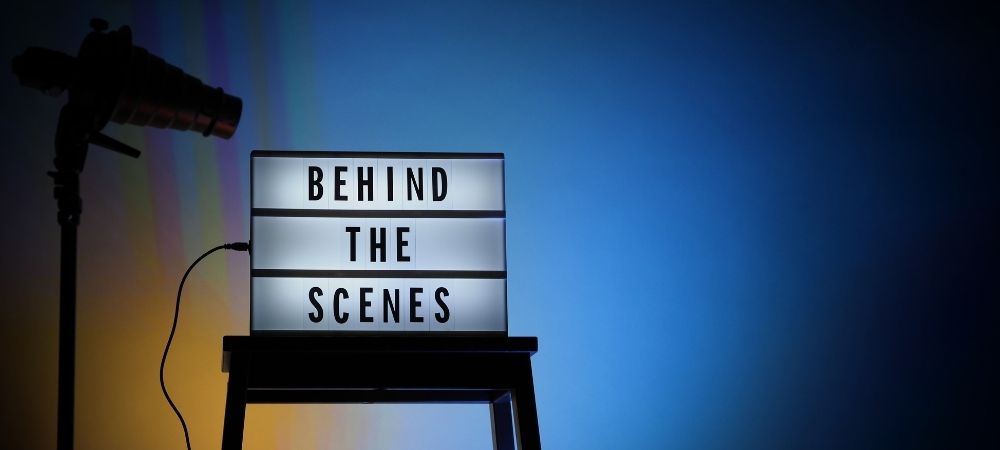
Pattern interrupts are anything you add or do in the course of your video to, as the name suggests, break up the style or flow of the video by introducing an unexpected element.
The video Behind the scenes business trends by Neil Patel showcases excellent pattern interrupts in action.
You can vividly see how he uses several transitions, text overlays, and other visual effects to avoid making the video look stiff and rigid.
And just when you least expect it, Neil’s co-host shows up and takes over. It is this kind of varied approach to presenting that provides the pattern interrupts that stop the script—and the resultant video from getting boring.
Pattern interrupts can be anything from switching camera angles to using graphics that pop up on the screen as the presentation is on.
However, whatever you use as your pattern interrupt should serve a clear purpose, namely, emphasizing a key point or isolating a sobering thought.
Edit and Refine
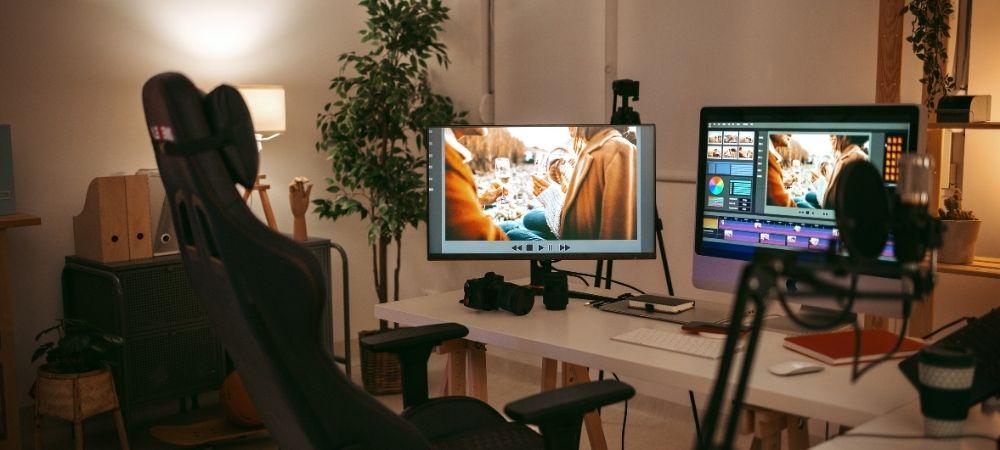
The editing part is your final chance to fish out any flaw in your video that will make the actual show fall short of the awesome ideal in your head. So, give it your best.
You see, the best YouTube video scripts seldom come out great on the first attempt.
Those narratives and body language you see so perfectly executed on the screen are the result of countless hours spent weeding out the unnecessary bits and honing the best parts.
When the first draft of your script is ready, go through it again. You just might find out that a particular tip could use better implementation or some element of the presentation could rub your audience the wrong way.
The idea is to save the day before it’s gone.
In Conclusion

Behind every high-performing video is a script that got the following things right:
- In-depth knowledge of the target audience
- Connecting with the viewer’s needs and pain points
- Keeping things interesting by using various audience engagement tools like pattern interrupts and midpoint engagements to break up an otherwise monotone delivery
Thanks for reading! Which of these tips are you most eager to try out?

